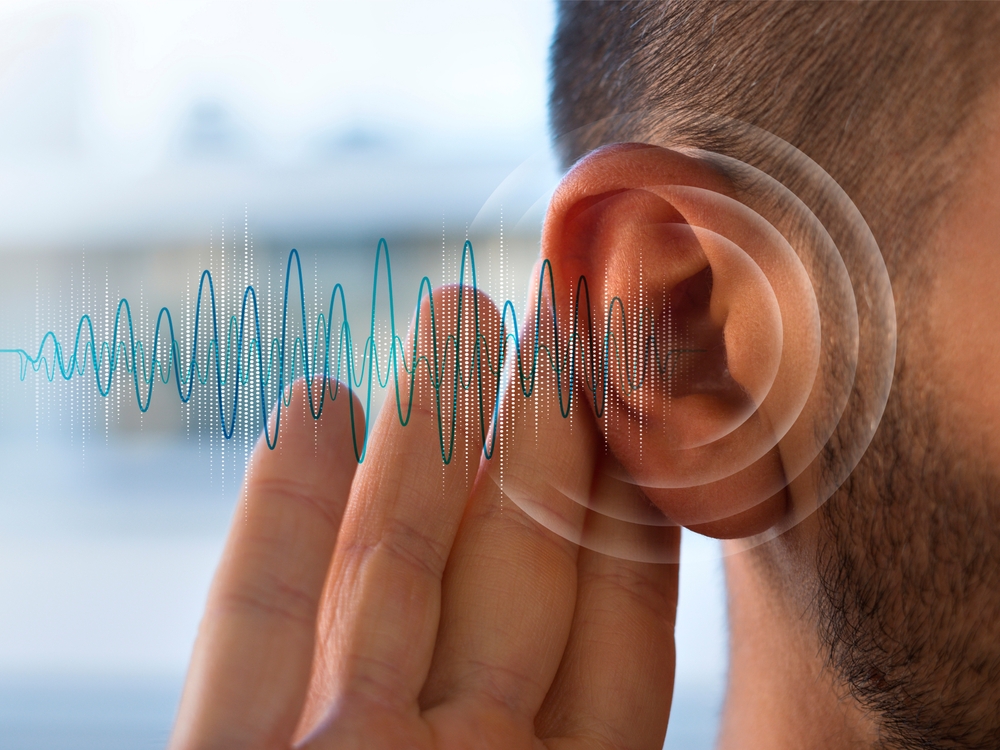Do you tilt your head to hear? Or plan seating arrangements in advance, so your friends sit on the side of your “good ear?” Are your friends getting confused because sometimes you hear them perfectly, but in other cases, you can’t hear them at all? You may have hearing loss in one ear.
A more subtle side-effect of single-sided hearing loss is that individuals avoid situations where they are required to hear. Hearing loss in one ear can cause serious consequences to lifestyles, relationships and overall health.
Yet, many individuals with single-sided hearing loss don’t seek treatment. They believe it’s not so bad because they can hear in the other ear, when in fact, it may be worse because their ability to hear is unpredictable.
There are several reasons why you should seek treatment for your single-sided hearing loss.
Hearing what’s on the left vs. the right
When you have one deaf ear, your “good ear” may still hear sounds coming from the “bad ear,” but your head blocks and distorts those sounds. Sound waves can move around objects, but as they do, they lose strength and become distorted. It’s similar to hearing the murmurs of a TV at normal volume when standing in a different room. This distortion can lead to mishearing someone speak or having difficulty locating important sounds, like sirens or oncoming cars.
In profound cases, single-sided hearing loss can be treated with a re-routing device that picks up sounds near the ear with hearing loss and transfers those sounds to the other ear. These devices significantly improve hearing, although determining which direction the original sound came from remains difficult.
Hearing with your teeth
Some re-routing devices work in ways you might not expect. How does hearing through your teeth sound? Some hearing systems involve wearing a wireless device that resembles a retainer, similar to the one you might have worn after having your braces removed.
Hearing through your bones
Some hearing technology devices work by picking up sounds on the impacted side, then transferring sounds through your bones to the “good ear” in a process known as bone conduction.
Bones are actually very effective at transmitting sound. They do it naturally when you speak.
That’s why your voice sounds so different on a recording. You normally hear your own voice through your bones, not as others hear you.
Cochlear implants
For some patients, a cochlear implant is the best option. These devices must be surgically implanted. They avoid damaging the inner ear by sending sound information directly to the brain.
Not all hearing loss is the same. A hearing professional can evaluate your individual level of hearing loss to determine the most effective treatment options for you.
With both hearing aids and cochlear implants, however, the longer you wait, the less effective they will be. If cochlear implants are too expensive for your budget, even with insurance, talk to your hearing specialist about hearing aids.
Personal sound amplification products
When an individual begins experiencing hearing loss in one ear, he or she may choose to download an amplifying app, which makes sounds louder and communicates with the headphones you wear for listening to music.
Amplifying apps can reduce background noise and provide other benefits that will improve your hearing in the short-term.
This is not a practical long-term solution for most people, however. Most individuals experiencing hearing loss don’t simply lose the ability to hear sounds at lower volumes, they also lose the ability to hear specific frequencies, which creates significant gaps in the sounds they hear.
Hearing aids
The reality is it’s nearly impossible to get by with one functioning ear. Individuals who purchase hearing aids say they’re shocked at how much better their hearing is when they can hear clearly from both ears.
Your ears are a package deal. Two are always better than one, and you need to be able to hear on both sides.
You should get a hearing test to determine how significant your hearing loss is in the “bad ear.” Hearing specialists can perform a complete hearing evaluation to determine if hearing aids are a viable option for you.
Untreated hearing loss will get worse over time and can even affect your “good ear.” That leaves you with fewer options the longer you wait to seek help.
Don’t simply accept your single-sided hearing loss. Get a hearing test. Discuss your treatment options with a hearing professional who will help you can stay active and social.



